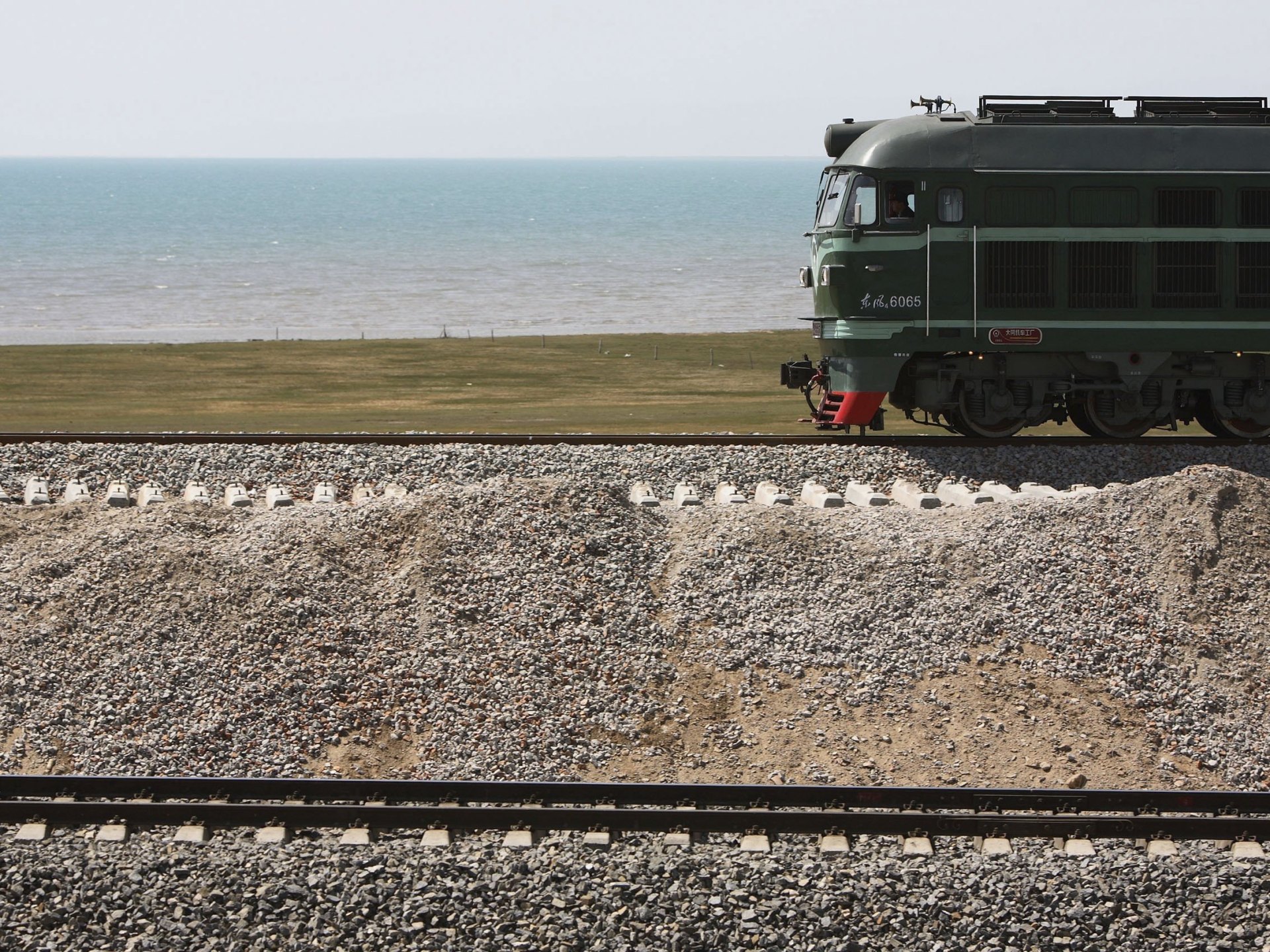Western countries are racing to withdraw all economic and commercial pressure cards from Russia's hands.
After gas and oil, the turn comes to trade, and Europe is seeking to strengthen a trade route linking it with China without the need to pass through Russia, in an effort to increase Moscow's isolation.
The European countries found their destination in the middle lane, a trade line that combines land, sea and rail corridors, capable of linking the farthest China with the heart of Europe.
Germany is leading European efforts to strengthen the infrastructure of this corridor, as it abandons the Northern Trade Corridor, which connects China with Europe and passes through Russia, and this northern crossing remained the preferred trade route for Europeans, until the outbreak of war in Ukraine.
What is the middle lane?
The middle corridor known as "TRANS-CASPIAN INTERNATIONAL TRANSPORT ROUTE" or "TITR" is among the 3 corridors of global trade between China and Europe, with a length of 4,256 km between road and railway, in addition to 508 km across the sea.
This corridor starts from the Chinese city of Kashgar, then Kyrgyzstan, then Uzbekistan, then to the port of Turkmenbashi in Turkestan, so that all goods are transported via containers to Azerbaijan and then to Georgia, and from there to Turkey, specifically the Kars railway station, then to Istanbul or Turkish sea ports, and from there to Europe and the rest of the world.
This corridor is considered among the 3 main corridors linking Asia with Europe, the first of which passes through Russia, and the southern one that crosses Iran or through the Suez Canal.
Will the middle lane be a substitute for the northern one?
According to the Turkish Ministry of Transport and Infrastructure, the middle lane is the fastest compared to the northern one that crosses from Russia, because a freight train departs from China to Europe and chose the middle lane that travels 7,000 kilometers in 12 days compared to a distance of 10,000 kilometers and a period of not less than 15 days in the event Cross the northern route (ie through Russia), but if it crosses the southern corridor, it will travel 20 thousand kilometers and will not reach Europe except in a period of 45 to 60 days.
The volume of shipments passing through the crossing has tripled during this year, reaching 845,000 tons during the first seven months of 2022, compared to about 311 tons during the same period last year, which means an increase in global trade dependence on this passage.
What countries benefit?
Turkey is one of the sponsors and supporters of this corridor, and it is the main negotiator and interlocutor for all the countries through which the corridor crosses, starting from China to Azerbaijan.
The completion of the Baku-Tbilisi-Kars railway linking Azerbaijan with Georgia to Turkey is one of the most important projects that Turkey is focusing on, as it is expected that its capacity will reach 3 billion passengers and 17 million tons of cargo annually.
By adopting the principle of “If your wind blows, seize it” Azerbaijan seeks to take advantage of the current situation to transform into a vital global trade and energy corridor.
Azerbaijan is currently expanding the free trade zone in a town located 70 km south of the capital, and the renovation and expansion of Baku port has already been completed in two phases, the first launched in 2012 and the second in 2020, located at the western end of the Caspian Sea, which will be the connecting point between all shipments that Reaching from China to Turkmenistan, the port is designed to transport containers and goods from east to west.
To enhance the strength of this corridor, Azerbaijan, Kazakhstan and Georgia are planning to develop a new transport route capable of transporting 200,000 containers annually.
To facilitate the passage of trucks, the three countries plan to set uniform tariffs for local shipping companies and facilitate the work of transport companies.
The countries that participate in this corridor and its development projects expect that its annual profits will reach one billion dollars, a figure that is expected to rise in the coming years with increased dependence on it and a decline in dependence on the northern corridor that passes through Russia.
All circumstances encourage relying on the middle corridor, especially since crossing through the Russian railways along the road between China, Russia and Europe increased in price by about half during 2021 compared to 2020, and that at the beginning of the year and even before the outbreak of the war, the railway line between China and Russia was It has reached its maximum level and the volume of containers passing through it can no longer be increased.
The middle lane departs from the Chinese city of Kashgar (Reuters)
What about China?
In 2013, China launched the "Belt and Road" initiative, which consists of two trade corridors: the first is the "Silk Road Economic Belt", which crosses Central Asia, Iran and Turkey to reach Europe.
The other road is watery, and it is known as the "Maritime Silk Road" and it originates from the South China Sea, then the Indian Ocean, then the Red Sea to the Mediterranean. This plan has been allocated a budget of 152 billion dollars.
The Chinese plan is currently facing a great difficulty, the first of which is that Russia is suffering from Western isolation, and therefore cannot be relied upon in the Silk Road plan. Therefore, it does not mind facilitating development in the middle corridor that enables it to reach Azerbaijan through the Caspian Sea, and from there to Georgia and then Turkey. At lower cost and in less time.

